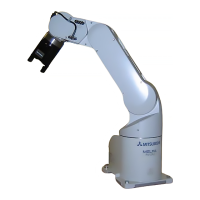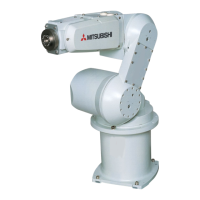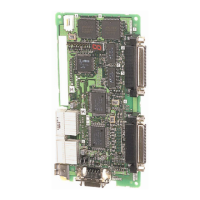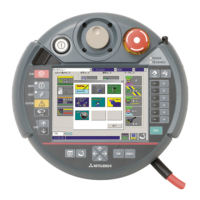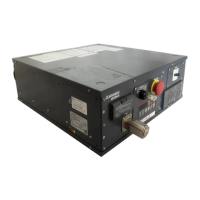Do you have a question about the Mitsubishi RV-2F-D Series and is the answer not in the manual?
| Number of axes | 6 |
|---|---|
| Payload | 2 kg |
| Horizontal reach | 504 mm |
| Repeatability | ±0.02 mm |
| Weight | 19 kg |
| Protection class | IP40 |
| Degrees of Freedom | 6 |
| Maximum Reach | 504 mm |
| Installation | Floor, Wall, Ceiling |
| Type | Articulated |
Details standard and special configuration items included with the robot.
Explains how to identify the robot model and its components.
Lists the components of the robot arm and controller.
Lists optional equipment and special specifications available for the robot.
Provides the basic technical specifications of the robot arm.
Defines key specifications like repeatability, load capacity, and vibration.
Identifies and labels the various parts of the robot arm.
Shows external dimensions and the robot's operational movement range.
Covers wiring, piping, and electrical specifications for hand tooling.
Lists and describes available optional accessories for the robot arm.
Explains the process and timing for robot arm overhaul.
Lists consumable parts required for robot arm maintenance.
Outlines the technical specifications of the robot controller.
Details controller protection ratings and power supply requirements.
Identifies and labels the components of the CR750 and CR751 controllers.
Provides external and installation dimensions for the controllers.
Describes the types and functions of external input/output signals.
Lists dedicated I/O signals and their functions for robot control.
Explains connections for emergency stop, door switch, and enabling device inputs.
Details how to change the robot's operation mode using a key switch.
Covers the wiring and configuration for additional axis control.
Lists and describes available optional accessories for the controller.
Lists consumable parts required for controller maintenance.
Details the commands available in MELFA-BASIC V programming language.
Lists and explains key operational parameters for the robot system.
Describes the contents and purposes of accompanying instruction manuals.
Covers self-diagnosis stop functions, safety I/O signals, and general precautions.
Specifies environmental conditions required for safe robot operation.
Provides critical safety advice for handling and operating the robot.
A checklist for selecting robot arm and controller specifications.
